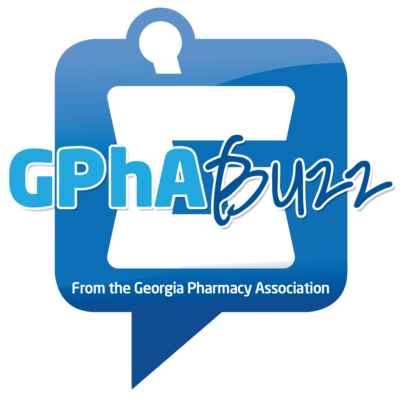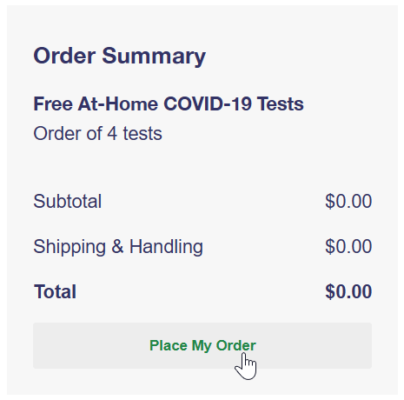Motivating lazy mice, hypertension drug showdown, preventing diabetes with coffee, and more
16 Dec 2022
Posted by Andrew Kantor
Introducing the GPhA Buzz podcast!
 Would you prefer to hear Buzz every day rather than read it? Good news! We’ve finally dipped our metaphorical toe into the expanding world of podcasting with the first episodes of GPhA Buzz.
Would you prefer to hear Buzz every day rather than read it? Good news! We’ve finally dipped our metaphorical toe into the expanding world of podcasting with the first episodes of GPhA Buzz.
- It’s still in beta — we’re experimenting and learning the ropes, so forgive us our trespasses. The guy producing it isn’t terribly bright, either, but he tries his best. (Feel free to send feedback!)
- Each episode is between 6 and 8 minutes — quick and to the point.
- Right now it has the same stories as in the email version, but via audio. If we get 100 regular listeners after a month, we’ll continue making episodes and possibly expand the format.
- The GPhA Buzz podcast is available via every major podcast service (Amazon, Google Podcasts, iHeartRadio, Pandora, Spotify, Stitcher, TuneIn) except iTunes, which we’re working on*. Just search your podcast app for *GPhA Buzz*.
- iTunes users might be able to add it via this address:
https://gphabuzz/com/feed/podcast. (Note: That’s not a link for humans — just for podcast apps!)
Not ready for a podcast app? You can check out episodes on Stitcher.
* Apple just makes everything more difficult.
What’s podcasting, anyway?
Podcasts are essentially radio shows delivered via the Internet. You listen to them on your phone (usually) via any one of a zillion podcast apps. (GPhA Buzz recommends Pocket Casts for Android or iPhone; there’s even a Web version. Not because we’re paid, but because it’s what we use.)
Some ’casts are daily, some weekly, some whenever their creators have the time. There’s news, fiction, history, true crime, economics, horror, comedy, you name it — you can have your own personalized Fireside Chat™ without the whole Great Depression and WWII thing going on.
100 years of Grimsley Pharmacy
A big Buzz shout-out to GPhA member Randy Logue, owner of Grimsley Pharmacy in Bainbridge — a pharmacy that just celebrated its 100th anniversary!
The pharmacy was known in town for its soda fountain and triple-decker sandwiches made by Mrs. Grimsley Sr., and back then, prescriptions were delivered by delivery boys on bicycles.
Coffee vs diabetes
Women who were pregnant and had gestational diabetes would do well to start or continue drinking coffee after giving birth. Why? To prevent the onset of type 2 diabetes.
Singaporean researchers found that having gestational diabetes increased their risk of type 2 diabetes 10 fold. Yikes. But drinking two to five cups of either caffeinated or decaffeinated coffee reduced that risk big time.
Compared to non-coffee-drinkers, the risk of diabetes was reduced by 53% by drinking four or more cups of coffee a day. (Keep in mind that one cup is about half a typical American mug.) Drinking less coffee still helped, but it was a case of ‘the more the healthier.’
Small caveats: Adding too much sugar or creamer reduces the effect, and the research didn’t consider brewing method.
Paclitaxel: Will it or won’t it?
Sometimes paclitaxel works for cancer, sometimes it doesn’t, and genetic analysis of tumors has never found any kind of marker to indicate which way it will go.
But now Spanish researchers have the answer. It’s not in the genes, it’s in the proteins. They discovered that mutations don’t matter — what matters is whether the tumor expresses the CDK4 and filamin proteins. If it does, paclitaxel works. If not, it won’t. And that’s true in 90 percent of cases.
“The study identifies the first specific predictive factors for a conventional chemotherapy treatment, for which only indirect or imperfect predictive markers were known until now. Instead, CDK4 and filmanin A are associated with paclitaxel activity in a very precise manner.”
Free tests are back!
After a few months of hiatus, the White House is making free Covid-19 tests available by mail: Order yours at COVIDtests.gov. They’ll start to ship the week of December 19, possibly in time to be sure Uncle Wheezy is safe to have over for Christmas dinner. (The administration had to juggle funds, as Congress has refused to allocate any more money for dealing with the pandemic.)

Kidney disease: Preventing acute from becoming chronic
Good news for mice with acute kidney injury (AKI). While it can often cause long-lasting damage and lead to chronic kidney disease (CKD), there’s hope — and it comes from an existing type of drug.
Scottish researchers found that mice with acute kidney injury had increased blood levels of the protein endothelin, which happens to cause constriction of blood vessels and strain on both the heart and kidneys. So they treated them with an endothelin-A antagonist*.
And what d’ya know: The treatment “normalized blood pressure, improved macrovascular and microvascular function, and prevented the transition of AKI to CKD.”
“These findings suggest that inhibition of the endothelin system early after AKI might be beneficial in preventing development of CKD in patients.”
* Ambrisentan? Atrasentan? Sitaxentan? They didn’t say.
Speaking of mice
Let’s say you have lazy mice — the kind that just won’t get off their fuzzy butts to exercise. It might be because of (wait for it) … their gut microbes.
University of Pennsylvania medical researchers found that certain bacteria produce certain metabolites, and those metabolites were responsible for the “sizeable inter-individual differences in running performance.”
What, you want more detail and more science? You got it.
The bacteria are Eubacterium rectale and Coprococcus eutactus, and the metabolites are fatty acid amides.
The FAAs stimulate CB1 endocannabinoid receptors on sensory nerves in the gut, which connect to the brain via the spine. When those nerves are stimulated, they increase dopamine levels during exercise in the brain’s ventral striatum.
Ergo, the mice get a really intense “runner’s high” and just love to exercise. If this translates to humans, “This line of research could develop into a whole new branch of exercise physiology.”
BP drug cage match
It’s chlorthalidone vs hydrochlorothiazide!
The arena: A big Veterans Affairs trial!
The winner: It’s a tie!
Sure, the guidelines say chlorthalidone is better, but there wasn’t any actual evidence. And hydrochlorothiazide is a lot more fun to say. So the VA docs did a study on 13,500 vets taking low doses of each of the meds.
The team found no difference between the two drugs, at these lower doses, for the prevention of cardiovascular disease or non-cancer death, which included heart attack, stroke, heart failure, or lack of blood flow requiring medical intervention.
The latest variant
The newest and most exciting Omicron variant to worry about has a name so long they gave it a nickname. It’s BF.7, which is short for BA.5.2.1.7, and it’s the variant that’s spreading around China while accounting for between five and six percent of US infections.
What’s the exciting part? BF.7 has a basic reproduction number — called its R0 — of between 10 and 18.6, which means one infected person is likely to give it to a dozen or more people.
Plain ol’ Omicron? That’s got a R0 of about 5., meaning BF.7 is three times as virulent. Oh, and it can evade the antibodies that come from vaccination or previous infection.
The symptoms are the same as with Omicron, but also include vomiting and diarrhea for some people. Yay!


